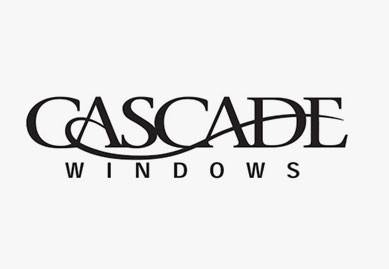Understanding Siding Code Requirements: A Comprehensive Guide for California Homeowners

Picture this: You just picked out the perfect color and design for your brand new siding. Everything is perfect, and even the price of the materials fits your budget. But then you remember, you live in California. Known for its strict code, California has many different hoops you need to jump through for a variety of situations.
Whether it is because you are in a fire-zone, a historical zone, or an earthquake zone, California has siding code requirements set up in place to protect you and your family’s home. This may seem strict and ridiculous, but it is actually well-thought out and necessary.
The code protects you by making sure all the siding work your contractor is doing is inspected and double-checked by the city. This holds everyone to a certain standard by an unbiased 3rd party
Why Do Building Codes Matter?
You might be asking, “why do I need to waste my time with these annoying codes? “, and my answer is to protect your home’s structural integrity, make sure you meet all energy standards, and therefore protect your investment into your home.
Ensuring Structural Integrity
Siding protects your home on a fundamental level. It acts like a barrier between the outside elements and the structural frame, insulation, and etc,. Underneath. Without the proper code enforcement, a lot more homes would be in jeopardy with the ruthless nature.
That is why codes exist, and to enforce that code, the building departments of Califonias’s cities and counties exist. The building requirements make sure that all major parts of the siding process meet the standard necessary for that particular region.
Unfortunately, there are many historical disasters that caused dramatic changes in California’s building code. Just to name a few: 1906 San Francisco Earthquake and Fire – 1933 Long Beach Earthquake – 1971 San Fernando Earthquake – 1989 Loma Prieta Earthquakes – 1994 Northridge Earthquake – and 2018 Camp Wildfire (deadliest in California history). To dive further into this, let’s take a look into an excerpt from this article by California’s official website
“1933
The Field Act became law as a legislative response to the 1933 Long Beach earthquake. The 6.3 magnitude quake on March 10, 1933, resulted in 120 deaths and over $50 million in property damage. The quake destroyed 70 school buildings and rendered another 120 school buildings damaged, all in Southern California.
Fortunately, no children were present during the quake that occurred at 5:54 p.m. The Act assigned responsibility for the design and construction of new public schools to the State Architect, but was limited to only the structural design and construction. The building standards developed by the State Architect were placed in Title 21 of the California Administrative Code (renamed in 1988 to the California Code of Regulations).”
As you can see, many instances where natural disaster whether wildfires or earthquakes caused our local governments to put in place safeguards to protect future households from experiencing tragedy.
Promoting Energy Efficiency
California is committed to helping people make their homes more energy efficient. We recommend going to the official site to see if your household qualifies for any of the state programs. As a rule of thumb, following the energy requirements for your home will always benefit you.
For some, they qualify for tax breaks or special programs. For others, just following the guidelines, they start saving a lot more on all their utility bills because of the improved thermodynamics of the home.
“The relationship between siding and insulation is very tight-knit. The siding being the protective layer of the home works together with the insulation to keep the home warm. Without the siding, the insulation would not stay put and corrode due to no moisture protection rather quickly. Without the insulation, the siding would keep out elements like rain and wind, but the home would be freezing cold on cold days and very hot on hot days because without insulation the siding does a poor job against dramatic temperatures.” – Home Improvement Expert Alex M.
Protecting Homeowners’ Investments
Another huge upside of having strict rules and regulations is that your contractors are held to a high standard. Not only are they required to be fully licensed and insured in order to pull a permit on your behalf, but they are responsible to meet all of the cities’/counties’ guidelines.
How the building department keeps this in check is by having all the major parts of your project (whether a new build or an existing remodel) inspected by a city/county inspector. This person verifies and only signs off once the contractor in question has the completed that specific stage of the project by code/law.
Once all major stages/inspections are passed, there is a final inspection. Now you do not just have to rely on your company’s word of it being done properly, but you have a permanent stamp of approval in public record that your siding project was completed exactly as needed.
Now that you did it the right way, you not only will avoid any type of fees for illegal construction (without getting city approval/permit) but will avoid any potential issues when selling your home. This means you have proof for any potential buyer that you were a fantastic caretaker of the home and had everything done to the great state’s building standards.
Basics of California Building Codes Relating to Siding
I talk a lot about different city/county code requirements, but there is a certain average that is held by basically all building departments across California. To understand this let’s start with code foundations

Code Foundations
“The California Building Code (CBC) is the set of regulations governing the design, construction, alteration, and maintenance of buildings and structures in the U.S. state of California. The 2nd part of Title 24 of the California Code of Regulations (CCR), the CBC falls under the jurisdiction of the California Building Standards Commission(CBSC).” – ClearCalcs.”
The CBC updates every 3 years, the latest update being 2022. This is the general building standard in California. After this code is applied, then certain cities/counties can make local amendments. These changes can be more or less strict in relationship with the area’s topography, geography, or climate. This applies to siding in a general building perspective making sure that all fire, structural, access safety/compliance is met.
The CBC is made up of the IBC (International Building Code) with just all of the needed changes to specifically fit California’s needs. The IBC, and therefore the CBC, also provide regulation in all buildings and structures to make sure that all the right engineering, construction practices, and material quality is up to par for public safety reasons.
General Requirements
The material standards are not too complicated. First, you need to make sure that you have a retardant for vapor or moisture over the shear wall. A shear wall is necessary and must be completely dry and free of rot/moisture damage.
Then you can use any of the materials listed in the code as long as the application follows all the instructions, and all the previous steps of work were inspected and signed off on.
Here are a few examples: “Exterior wall coverings regulated by this section include aluminum, stone and masonry veneer, wood, hardboard, particleboard, wood structural panel siding, wood shakes and shingles, exterior plaster, steel, vinyl, fiber cement and exterior insulation finish systems. This chapter also contains requirements for the use of vapor retarders for moisture control in walls; wind resistance and water-resistive barriers for exterior wall coverings; and the water-resistive barrier required beneath exterior materials.” – SECTION R703 EXTERIOR COVERING
A huge overlooked safety requirement is fire code. In general, there are basic practices like ensuring there is always a safe escape route in case of a fire. Also, a lot of siding materials nowadays are already fire-resistant.
However, there are some locations that based on their susceptibility to wildfires need specific protection aka WUI (Wildland-Urban Interface Zones). Because is really is area specific how strict the code gets here are some general requirements our expert Alex M. has seen: choosing ignition-resistant materials (wood is typically discouraged unless covered in a chemical retardant) – Class A fire rating on the siding material itself – Non-combustible siding material – Ember resistant materials in soffits and vents like fine mesh screens – minimum clearance from potential fuel sources like dry vegetation – Fire-rated OSB and making sure that the roof to wall transitions are well-covered – Fire-resistant coatings. The exact codes are found per city/county, and the general code is found in Part 9 of Title 24 under CFC (California Fire Code).
In regards to siding as an exterior wall system, there are not too many specific regulations for wind and earthquake resistance. The major specification that we see is earthquake prone regions may need to have a reinforced shear wall or specifically designed load-bearing wall. In all these cases, the city will require you to get architectural calculations, and following those, your home will meet all requirements.
Besides that, you have the general rule of thumb for proper exterior wall construction, and following that in Chapter 14 of CBC, you will generally meet all necessary code requirements for your siding.
Energy Efficiency Stipulations
The California Energy Code, established in 1976 under the Warren-Alquist Act and overseen by the California Energy Commission (CEC), sets energy and water efficiency standards for new, altered, and expanded buildings. It features three core components:
- Mandatory Requirements: Applicable to all buildings, these are fundamental standards that must be met.
- Performance Standards (Energy Budgets): Varied by climate zone and building type (16 zones in California), these standards provide flexibility for builders to achieve energy efficiency based on local conditions.
- Prescriptive Packages: An alternative to performance standards, these are specific, pre-approved approaches or checklists that streamline compliance.
The Energy Code, updated in 2022, aligns with California’s technological advancements, emphasizing energy-efficient practices such as heat pumps, photovoltaic and battery systems, and improved ventilation standards.
It supports 100% carbon neutrality goals by midcentury and provides compliance tools, including the Alternative Calculation Method Approval Manual, ensuring uniformity and encouraging innovation in building design and construction practices.
Specifically regarding siding, thankfully you just follow the practices of Chapter 14 of the 2022 CBC. In some cases where you had to deal with a dry rot repair, the insulation gets damaged in the process of rot.
In these cases (or when there was no insulation from the beginning), you follow your local ordinance on what type of insulation is required. You install that into the structural frame before you even apply the shear wall. After that, it’s business as usual. Shear wall, Waterproofing/flashing wrap, and installation of your chosen siding material.
Specific Siding Material Codes
The main point is that there are many different siding materials that you can use, but always make sure that you have at least one-layer of a water-resistive barrier. Taking this into account, follow the guidelines for each material, and you can be sure that you will pass inspection. Below, we will talk about a few of the popular options.
Stucco
With stucco, the focus of the code is on the different layers. First, because stucco is a heavier material, they want to make sure that your shear wall is structured properly to support the weight of the final product. This is why a lot of building departments have a shear wall inspection.
Next, they need to make sure that whether you are doing 1-coat or 3-coat stucco that your lath meets the requirements: paper, some sort of mesh/chicken wire, to have everything secured to the structural beams, and then applied and set for inspection.
After the lath coat is inspected and approved, it is pretty simple from there because most of the time you just need a final inspection. You can reference Chapter 19 and 25 of the CBC.
Wood and Wood-based Products
Exterior walls (siding) made with wood/wood-based products have to follow Chapter 23 of the CBC. This goes over virtually any questions you will encounter. For example: when it is required to use Fire-retardant-treated wood, what hardwood siding meets code and how, what type of nails to use, how many staples per sq.ft., how to account for shrinkage, accommodating allowable stress design, calculating lateral force-resisting systems, and general construction requirements.
Using these codes, the city ensures that any type of wood siding is being properly handled and installed. Let’s take hardwood siding. If you look at chapter 14 in the wood section, it sections off 2 types of hardwood. 1403.3.1 Basic Hardwood and 1403.3.2 Hardwood Siding. These then dive into even more specific guides to what exact processes need to be followed to maintain ordinance and will also specify if a local amendment has been made (Basic Hardwood ANSI A135.4. – Hardwood Siding ANSI A135.6 )
Fiber Cement Siding
Fiber Cement Siding is covered in Chapter 14 as well. It covers first if it is allowed as a material (under 1403.10). The siding must meet the requirements of ASTM C1186, Type A (or ISO 8336, Category A), and shall be identified on labeling listing an approved quality control agency.
Then the installation is talked about further in Chapter 14 of the CBC. Most of the time, if not all of the time, the manufacturers want their materials to meet code, so they make sure that all of their materials and installation producers match up with the state law.
A lot of building departments then will reference the manufacturer’s guide in the law because the manufacturer is required to ensure all of their manuals are up to date with the current code.
You can find all the details in section 1404.16 of Chapter 14. It details how to properly install fiber cement siding in general, and then subsections into Panel Siding (1404.16.1) and Lap Siding (1404.16.2). These reference how to place and seal the siding as well as refer you to the approved manufacturer’s instructions.
Vinyl and Other Plastics
Then there are your plastic and vinyl siding options. Siding made of plastic has different types of requirements because of plastics’ bad reputation as a material. Plastic, apron, or spandrel walls cannot be limited in their thickness.
The plastic material needs to conform to the dimensions found in chapter 26 and need to be constructed out of approved weather-resistant materials. They get approved based on how well they perform in different levels of wind turbulence. Exact metrics for wind loads can be found in Chapter 16.
Vinyl siding must be certified and meet the requirements of ASTM D3679 by an approved quality control agency. Both vinyl and plastic siding are similar in the sense that their approval depends on how much wind pressure they can handle per square foot.
Some areas in California are extremely windy and can either allow very specific variations of siding to withstand the wind or completely forbid its use. As for the installation code requirements, you can use either the approved manufacturer guide or dive right back into the later parts of Chapter 14
Pro Tip / Key TakeawaysWe always recommend making sure whoever is replacing your siding has these 3 important things.
|
Navigating Permits and Inspections
You need a permit in all cases of siding work. This is because you are dealing with the exterior shell that protects your home. By law, for any siding renovations, you need a permit.
Even when just doing a minor repair, you want to make sure that the city inspects for any extra damage or issues that your contractor/repairman might have missed. This then also gets stored and recorded by the building department, so that if you or another owner has any issues in the future, you are protected by that passed inspection/sign off by the building department.
On the other side, with any major siding replacement project, you always want a permit. This makes the contractor accountable to 3rd party professionals, and you have an official record of the improvement that you have made for any future sales of the home.
There are a couple of ways of going about pulling a permit. You, the homeowner, your licensed contractor, or an official authorized agent of either you or the contractor can pull the permit. The three major ways that the permit gets applied, processed, and approved are in-person, email, or on the building department’s website.
Once the permit is approved, you have your licensed professional begin the phases of work. The typical process we see is: Shear wall inspection, flashing inspection, and final inspection.
There are instances where you will have more inspections, so always make sure that either you or your contractor double check with the building department. To schedule inspections, you can call the inspection line on your permit card, email the inspector, or go in-person and schedule it.
We often see people pulling permits to save money, and that is perfectly fine. The problem lies when there is poor communication between the contractor and the person pulling the permit. You can get fined for calling an inspection when you’re not ready, failing the same inspection multiple times, or even taking too long to finish the project.
Most building departments give 1 year to complete your permit from the time you pay till final inspection. This is because most full siding replacement projects should take a minimum of 3 days to a maximum of 3 weeks.
The biggest recommendation we have is to have you contractor deal with the city as they should have experience and know what they are doing. Also, make sure that if they claim to have worked with your city before, check if their business license is up to date in the city records. You can just Google this in your building department’s business license directory.
Special Considerations for California’s Diverse Regions
Some areas as mentioned before have specific requirements due to abnormal circumstances. Whether it is because you live in an wildfire-prone area or because you live by the ocean, the California building code enforcement is placed to ensure all siding is built to withstand the geographical abnormalities.

Coastal Areas
Living near an ocean means two things for your siding: a lot of water and a lot of wind. When it comes to water, there are many different things you could do, but in the eyes of the city, you need to have the proper water-resistive barrier.
You need to have proper drainage in order to prevent water sitting in or on your siding and prevent condensation damage. You need to maintain your siding’s paint to ensure no cracks or holes start to allow moisture in.
Also in these regions, we see floods, and you need to have the proper wall system set up. Depending on your home’s elevation in these flood-hazard areas, your siding will need to be constructed with flood-damage-resistant materials.” For buildings in coastal high-hazard areas and coastal A zones as established in Section 1612.3, electrical, mechanical and plumbing system components shall not be mounted on or penetrate through exterior walls that are designed to break away under flood loads.” – up.codes
Another factor you have to be thinking about is wind. With a lot of coastal areas, there is no protection for the home from the wind besides that siding. Therefore, the siding has to bear certain wind loads. There are some exceptions, but either way, all the wind load requirements can be found in Chapter 16 under 1609 Wind Loads.
Fire-Prone Regions
For Fire-zones (WUI), you are required to use specific materials. In our experience, it varies per zone because of the risk level each area has.
On a more general note, Chapter 7 of the CBC goes over Fire-resistance as a whole, but we do not need all of that for siding. We need to make sure that our siding and shear wall material meets a fire standard that adheres to sections 714 and 715 of the code.
Besides that, you have details like fine mesh screens being installed in soffits and vents. Your local code will dictate to what level you have to reinforce your home.
Sometimes if a material does not meet the fire-resistance rating it needs, you can have a special chemical coat or paint applied to the siding that will make it pass the code. However, it is our opinion that you should always strive to not try to loophole the code as it was put there to protect you in the first place.
Conclusion
All in all, it is very important to follow your local and state building code because it was all put in place to protect you and your home. It protects you from natural disasters, poor material/construction quality, and losing finances when reselling your home. We recommend using a reputable and knowledgeable contractor who will be able to navigate and apply all the correct code requirements to your siding project.
FAQs – Understanding Siding Code Requirements: A Comprehensive Guide for California Homeowners
FAQ #1 Are permits free? No, unfortunately permits are not free and the cost is calculated by the city and factors in the price of your siding improvement project.
FAQ #2 Is not pulling a permit for my siding job illegal? Yes, you are required to pull a permit with any siding job as siding is a vital part of protecting the structural frame that holds together your home
FAQ #3 What is Title 24? Title 24 is the sixth section the of the CBC. The code is California’s response to reduce the state’s energy consumption.



 all communications are private and not shared with other parties.
all communications are private and not shared with other parties.





















